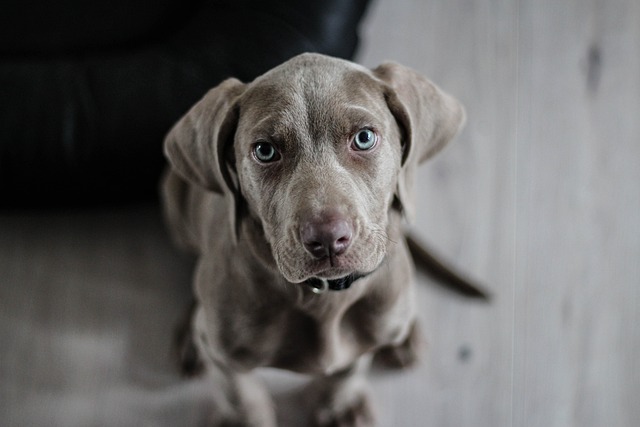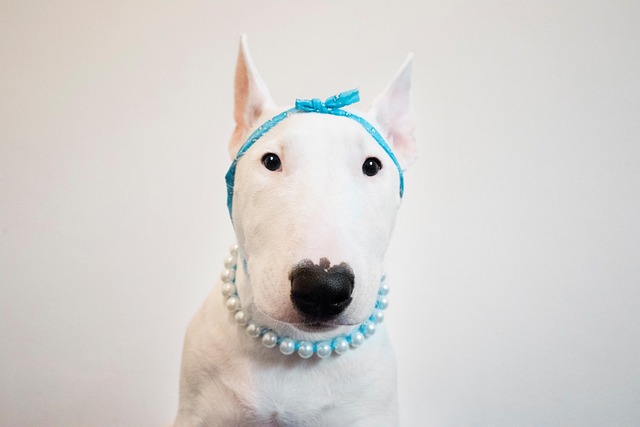
What's wrong with dogs always licking their paws
Watching their furry child constantly licking their paws, with that focused and persistent look, is both heartbreaking and confusing.
When the dog repeatedly licks and bites its toes, and even licks the meat pad until it becomes red, swollen, and oozing, the heart wrenching pain seems to be transmitted to the owner's heart. Interdactyly is a common foot disease in dogs, and continuous licking is like a vicious cycle, causing tiny wounds to deteriorate under saliva immersion. From bacterial growth in humid environments to subtle damage from hair friction, from the stimulation of allergic reactions to compulsive behavior of psychological anxiety, every licking and biting is a signal of discomfort in the dog's feet. We need to use professional knowledge to dissect the root cause of the problem, gently and patiently block the chain of deterioration, and let the injured feet feel the warmth of health again.
Understanding the causes of interdigital inflammation is the first step in solving the problem of licking. Moisture is the "breeding ground" for interdigital inflammation. Failure to dry the interdigital area after walking a dog after rain, as well as long-term wearing of damp foot covers, can lead to the proliferation of bacteria (such as Staphylococcus) and yeast. A veterinarian shared that 70% of cases of interdigital inflammation in outpatient clinics are related to "wet feet", especially for dog breeds with thick foot hair such as Bichon and Schnauzer. The wet hair locks in moisture like a sponge, providing an ideal environment for bacteria. Trauma is the direct trigger. Scratches from sharp stones, friction caused by excessive hair between toes, and even nails that are too long and bent and pierce into the flesh pad can all form small wounds. Dogs' licking is originally a "self-cleaning" process, but due to the stimulation of enzymes in saliva, the wound can become inflamed. The owner once found that his border collie licked his feet frequently after hiking, and finally found that the grass spur between his toes had caused suppurative inflammation.
Allergic reactions and psychological factors can exacerbate licking behavior. Food allergies (such as chicken and grains) or environmental allergens (such as pollen and dust mites) may cause allergic inflammation of the skin between the toes. One owner recorded that every time she consumed beef flavored dog food, her golden hair would experience redness, swelling, and itching between the toes, accompanied by frequent licking and biting. More specifically, psychological licking, separation anxiety, or stress caused by environmental changes can lead to compulsive licking behavior in dogs, similar to biting nails when humans are nervous. A behaviorist once observed that a Labrador Retriever who was anxious due to its owner's business trip would lick its feet for up to 4 hours a day, resulting in severe "psychogenic interdigital inflammation".

Continuous licking can lead to a vicious cycle of inflammation, licking, and deterioration. Although lysozyme in saliva has antibacterial effects, continuous moisture can damage the skin barrier and cause small wounds to develop into ulcers. A dermatologist observed under a microscope that after being licked by a dog for 3 days, the moisture content of the stratum corneum increased by 200%, and the number of bacteria was 50 times that of the untreated area. More seriously, the mechanical stimulation generated by licking and biting can promote the release of inflammatory mediators, making dogs feel more itchy, forming a vicious cycle of "the more they lick, the more itchy they become, and the more itchy they become, the more they lick". There has been a case where a poodle that continues to lick its feet had to undergo surgical sutures to lick through the toes within two weeks.
Scientific treatment requires both targeted treatment and behavioral intervention. Firstly, it is necessary to prevent licking behavior. Wearing an Elizabethan collar is the most direct method. Choose a soft cloth collar to avoid rubbing the skin with hard plastic. A homeowner shared the "dual protection method": after putting a collar on the dog, wrap a breathable elastic bandage around the inflamed area between the toes to provide dual protection against licking and biting. Next is wound care, which involves rinsing the interphalangeal area with physiological saline to remove pus and necrotic tissue, and then applying antibiotic ointment (such as mupirocin). A veterinarian emphasized that during care, the skin between the toes should be gently separated to ensure that the medication penetrates into the gaps. For interdigital inflammation caused by allergies, antihistamines (such as loratadine) should be used under veterinary guidance to relieve itching from the source.
Environmental adjustment and dietary improvement are important supports for rehabilitation. Keeping feet dry is key. Rinse the soles of the feet with warm water after walking the dog, thoroughly dry the toes, and use a low-temperature hair dryer to dry them. Some owners have developed the habit of "wiping their feet after walking the dog", which has reduced the recurrence rate of interphalangeal inflammation in their dogs by 80%. Trimming hair between toes should not be ignored. Use blunt scissors to carefully trim long hair to avoid skin irritation.
Psychological comfort and behavioral training break the compulsive licking. For foot licking caused by anxiety, it is necessary to improve the psychological state of dogs: increase interaction time, provide puzzle toys to distract attention, and a homeowner placed sniffing pads (hidden snacks) in places where dogs often lick their feet, successfully reducing foot licking time by 60%. Positive reinforcement training is also very effective: when a dog does not lick its feet within a specified time, a reward (such as freeze-dried chicken) is immediately given to make it understand that "not licking its feet=good things happen". A dog trainer once used the "timer training method": starting from not licking their feet for 5 minutes and extending the time every day, after three months, the bulldog that originally had compulsive licking behavior basically returned to normal.
Regular observation and follow-up ensure complete recovery. Check the site of interdigital inflammation every day: observe whether the redness and swelling have subsided, whether the exudate has decreased, take photos with your phone to record changes for comparison. A homeowner discovered the signs of recurrence of interdigital inflammation in a timely manner through the 'Daily Foot Diary', avoiding further deterioration. Follow the veterinarian's instructions for timely follow-up visits and adjust the treatment plan based on recovery. For stubborn cases, it may be necessary to combine medication baths (containing chlorhexidine) or oral antibiotics. This "whole process management" can prevent the condition from recurring.
When one day I see my dog running happily on the grass again, no longer bowing its head and licking its toes, the joy brought by rehabilitation will make all the nursing work meaningful. The tenderness of gently wiping the feet at night, the repeated attempts to choose a suitable collar, and the worry of searching for information all condense into the firm steps of the dog's meat pad touching the ground again. The licking and biting of canine interdigital inflammation is never a simple "bad disease", but an urgent call for help due to physical discomfort. We interpret this call with professional knowledge and respond to this need with scientific methods, making every stop of licking and biting a starting point for rebuilding foot health. When we hold the dog's feet that are no longer swollen, we understand that all attentive care is to protect this furry trust and companionship.

Watching their furry child constantly licking their paws, with that focused and persistent look, is both heartbreaking and confusing.

When you habitually pet your dog and suddenly notice that its once smooth coat has become rough and prickly, the change in texture will immediately alert you.

When we hold the soft and cute puppies in our hands, their furry little bodies and smart eyes instantly melt our hearts. From that moment on, we shoulder the responsibility of taking care of this little life,

You push open the door to find shredded pillow stuffing, chewed-through cables, or claw-marked door frames scattered across the floor—and in an instant,

When you realize that only your absence triggers your otherwise well-behaved companion into anxious behaviors—scratching at the door, barking incessantly,

When we hold the sweet and juicy soft-seeded pomegranates and look at the round, expectant eyes of the dogs around us, we always feel entangled: Can such delicious fruit be shared with our beloved fur children?